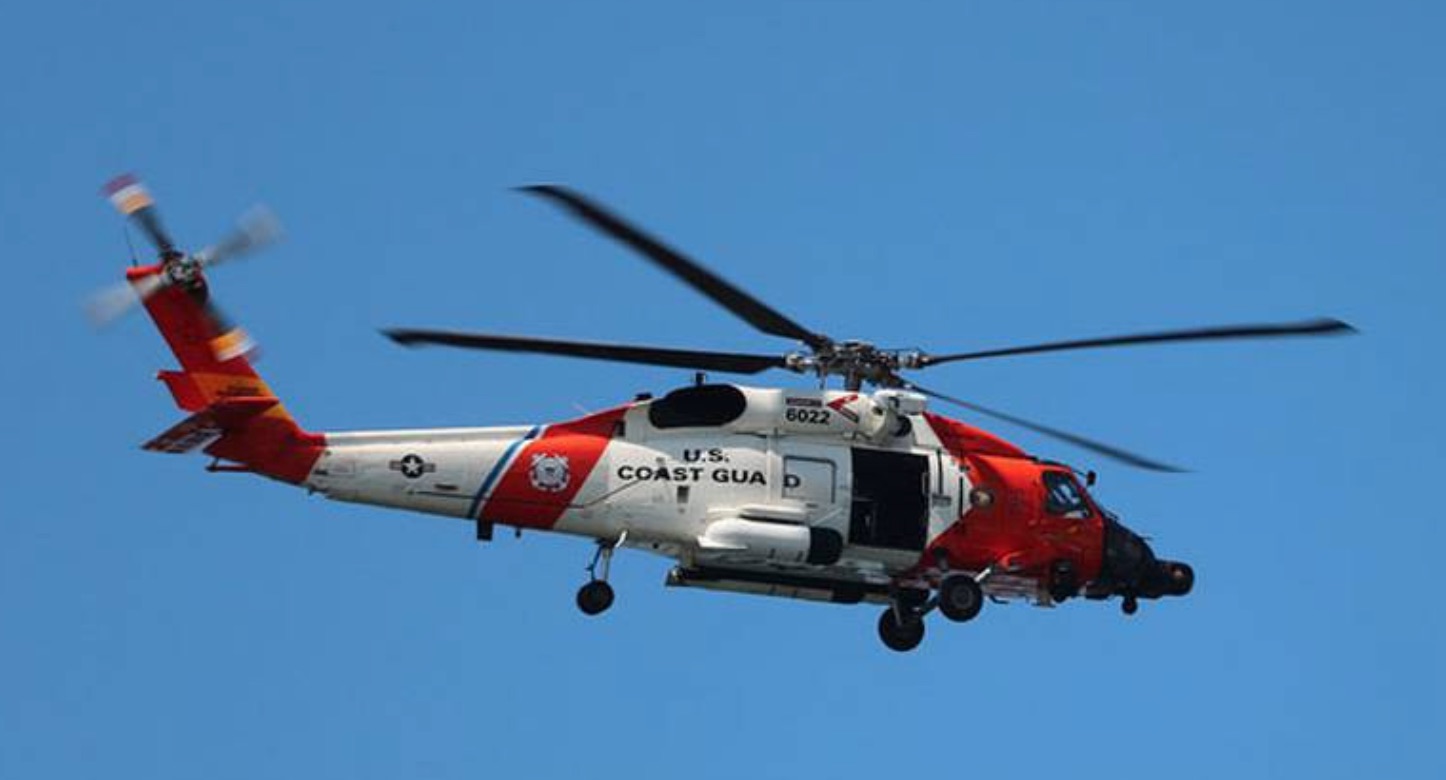The Coast Guard rescued two people from a plane crash Saturday 40 miles southeast of Ketchikan late Saturday afternoon.
An MH-60 Jayhawk helicopter crew from Coast Guard Air Station Sitka rescued the two from the U.S. Forest Service Cabin at Humpback Lake in the Misty Fjords National Monument after their Cessna 180 float plane crashed during takeoff.
The helicopter crew lowered a rescue swimmer who safely hoisted both individuals before transferring them to awaiting emergency personnel in Ketchikan.
The two survivors were the only passengers aboard the privately owned aircraft. No injuries were reported, according to the Coast Guard.
“This case highlights the importance of having safety equipment that is accessible and in working order,” said Lt. Maren Balke, search and rescue mission coordinator at the Sector Juneau command center. “The pilot was able to call for help using a satellite phone shortly after the crash, and they also activated a personal locator beacon, which allowed our air crew to quickly respond to their exact location.”
Weather conditions on scene were 5 mph winds, visibility of 10 miles, ceilings of 5,000 feet with an air temperature of 65 degrees.
Last week, six died after a sightseeing plane crashed in Misty Fjords. The National Transportation and Safety Board arrived in Ketchikan on Saturday to begin investigating the cause of the crash.
Alaska State Troopers identified the victims of that accident as pilot Rolf Lanzendorfer, 64, of Woodinville, Washington; Mark Henderson, 69, and Jacquelyn Komplin, 60, of Napa, Calif.; Andrea McArthur, 55, and Rachel McArthur, 20, of Woodstock, Georgia; and Janet Kroll, 77, of Mount Prospect, Illinois.
Troopers said their bodies will be transported to the State Medical Examiner’s Office in Anchorage.

Faa… Alaska, ever heard of it? Come regulate.
Yeah, surviving a crash greatly improves your chance of well, survival.
Given the cost of Coast Guard S&Rs, FAA and NTSB investigations, government-paid medical care, etc. I would bet that over the many years sight-seeing plane crashes in Misty Fiords have cost US taxpayers at least $100 million in 2021 dollars. The deaths are separate and distinct tragedies of course. I wonder if there is a point where flying into this particular US government national monument for sight-seeing is really worth it?
It’s a dangerous place to visit. Try flying down to Southwest Alaska in bad weather. We rolled the dice for 20 years. All of the carriers were required and followed FAA regulations on safety equipment but that doesn’t help you if you’re smashed up against the side of a mountain. You got to weigh the risk with the rewards and get in the plane with your eyes wide shut otherwise you probably wouldn’t get in the plane at all. Alaska isn’t safe unless like most alaskans you don’t venture more than 5 mi from the nearest highway and think you’re actually risking your life.
They push the limits. Its always the same scenario…non resident pilot, non resident passengers, and foul weather. They presell the tickets and people don’t want to get turned away. They risk it and this is what happens.
Except this time it was good weather and everybody lived to talk about it. When planes go down in the bush, it’s usually local pilots, local residents and it can be foul weather. Usually visibility or an icing problem. Sometimes it’s nobody’s fault and you just run out of time.
The worst place I ever landed in 20 years of bush flying was in Gamble in December during a blizzard at night with winds blowing 35 across the runway. Not recommended for the faint of heart.
And because of decisions to fly in weather like that Greg..is why Alaska is now on the faa highest priority hit list. They need to step in when people can’t use or won’t use their own good judgment. Wich is quite obviously happening in Alaska. Frankly I’m suprised you would fly in conditions like that. Being a man that’s terrified of the Chinese flu.
I’m not. I’m protected. Get the shot. Oh, you already did.
The FAA gives Credence to pilots in non-covered airspace. Local conditions change by the minute. Pilots don’t want to die either and I refer to their good judgment. Like I said, living and flying in the bush is dangerous. If you can’t handle that, best to stay on the road. But that’s why they paid us the big bucks.